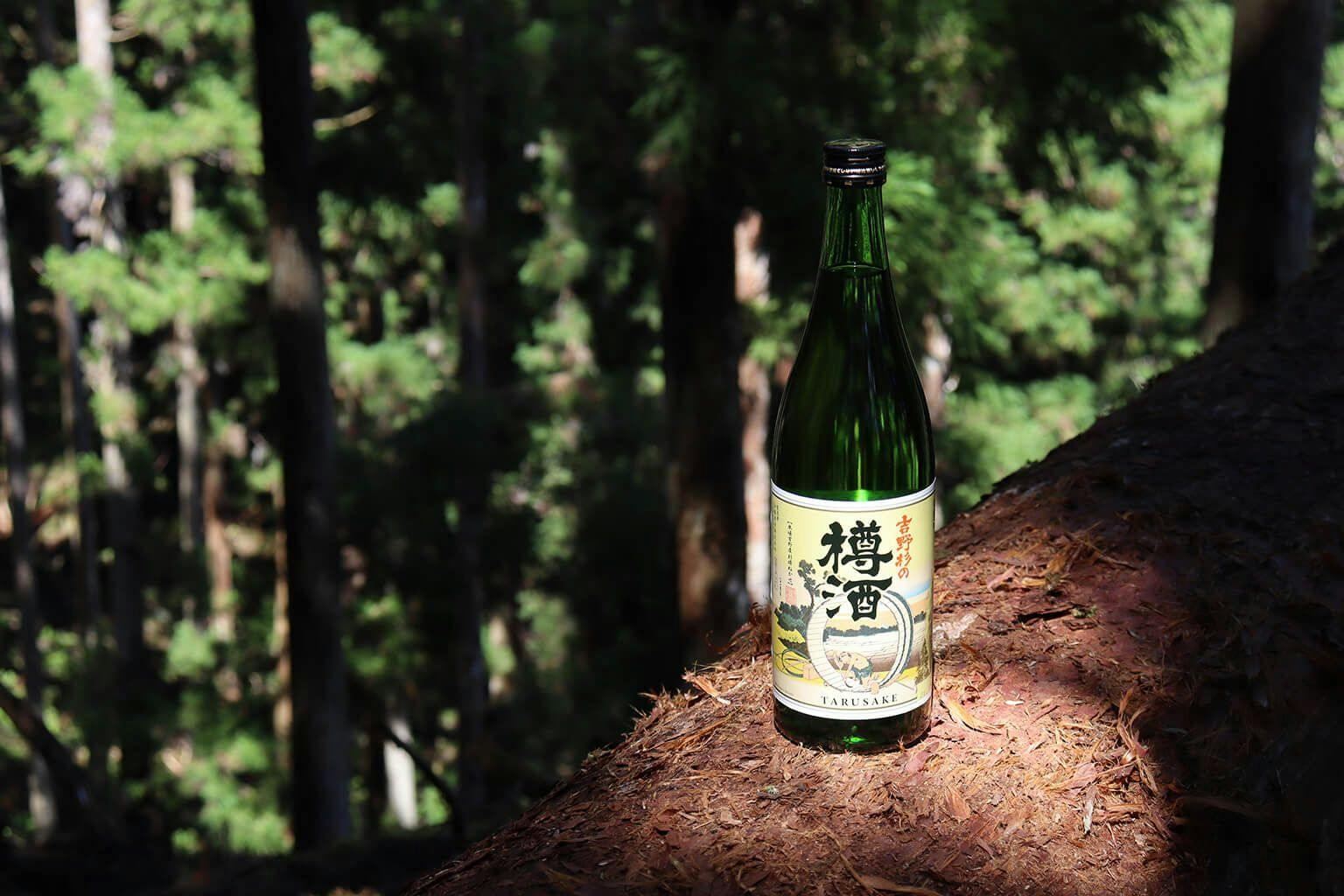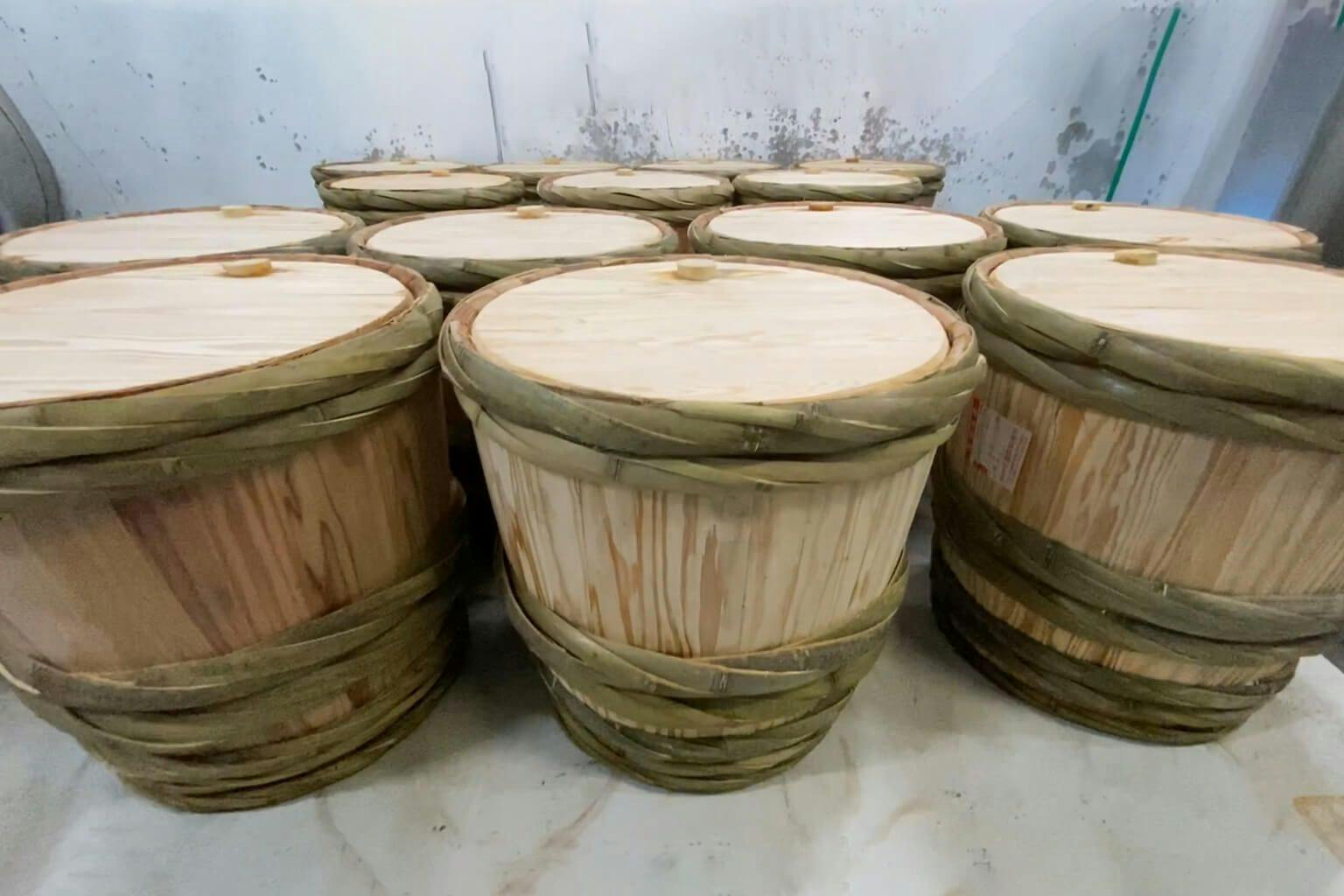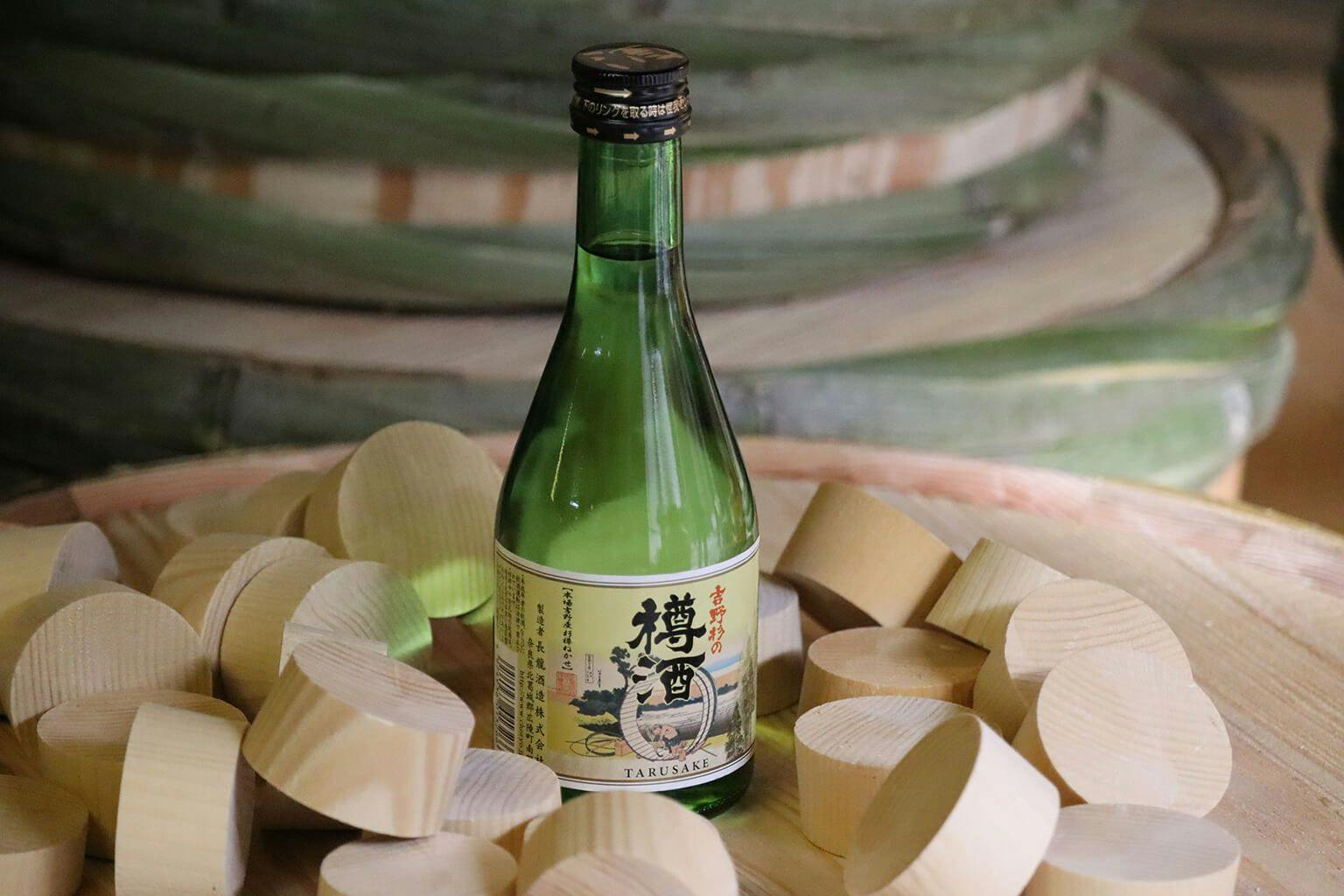What Is Taru Sake and What Gives It Such a Unique Flavor?
Table of Contents
When I was learning about sake and its history, I wanted to find out what the most authentic sake flavors were. I tried doburoku (unrefined sake), nigori sake (cloudy sake), futsushu and sake made from rice that wasn’t excessively polished. Tamagawa “Time Machine” is made from a very authentic recipe dating back to 1712 and Yamaguchi Brewing Company makes a wonderful doburoku.
What I didn’t think about at the time was the difference in storage between how sake was brewed and stored then and now.
Sugi or Japanese Cedar is a wood that has a long history in the production and storage of sake. It was used to make the large brewing tanks and the wooden barrels used to ship sake. Often, now, we hear of “sugidama” which are the bright green balls of sugi branches hung above the entry to sake breweries to signify the end of the brewing season when fresh new sake is ready in the spring.
Back in the olden days of sake production, shipping sake traveled from Nada to Edo (Tokyo) in wooden barrels. These sugi barrels (Japanese cedar barrels) predated ceramic and metal vessels. Just like wine and whiskey, when sake is stored in wooden barrels, it takes on some of the aromatics and flavor of the wood.
By the time the sake arrived in Edo it had taken on a honey color, a woodsy-aroma and a fantastic flavor. How deep the color, aroma and flavor depended on how long the sake spent in the barrel. This unintentional conditioning of the sake meant that the people living in Tokyo (Edo) experienced a very different sake than the people living in Nada where it was brewed.

A bottle of Choryo “Yoshinosugi no Taru Sake” with a background of Japanese cedar forest in Nara Prefecture.
That was it! That was the thing I was missing in my understanding of the original flavors of sake. It was really exciting to discover taru sake (sake that has been stored in taru). The wooden barrels, called taru, conditioned the sake resulting in taru sake.
Now taru sake is associated with special occasions like weddings and New Years. In fact, if you’re looking for a unique New Years gift, a bottle of taru sake is a great idea.
For me, I have a dream job. Choryo Brewing Company, in Nara, used to make sugi barrels for other breweries and then, one day, they decided that they should start brewing their own taru sake. They produce two amazing sake, called Choryo “Yoshinosugi no Taru Sake” made with futsushu, and Choryo “Yoshinosugi Omachi” Yamahai a junmai taru sake. What has this got to do with my dream job? Well, these two sake are aged in sugi taru and there is one person whose job it is to taste the sake and determine when it is ready to bottle. They have to go from taru to taru tasting the sake to figure out just when the aroma and taste are just so. Bliss! (Tippsy interviewed Choryo Brewing Company. Read the article to learn more!)

Sugi barrels made with Yoshinosugi cedar in Choryo Brewing Company.
So how should you enjoy taru sake? Atsukan—heated—helps you enjoy the fantastic aromatics, and flavor of the taru sake. I suggest “Yoshinosugi Omachi” Yamahai at 40°C/104°F. “Yoshinosugi no Taru Sake” is wonderful chilled. You should absolutely play with temperature when you get taru sake to find out how it changes and how you like it.
For food pairings, I find the woody aroma goes really well with cheese and mushrooms (especially macaroni cheese with a touch of truffle oil), cheeseburgers, winter stews, pickles and chocolate ice cream. Matching the temperature of foods and sake is another way to think about pairing: I’ll often serve Kikumasamune “Taru” room temperature with a charcuterie board; Choryo “Yoshinosugi no Taru sake” cold with chocolate ice cream; “Yoshinosugi Omachi” Yamahai Junmai at 40°C/104°F with truffle mac ’n cheese and a tomato salad (currently, Tippsy doesn’t carry this label, but please stay tuned!). Don’t be afraid to pair taru sake but always take the time to enjoy the color, aroma and flavor—it’s a little sip of history. And be sure to check the Sake Guide for more information on the origins of sake.

Russell King
One of the founders of Hannyatou Sake Bar in Seattle WA, he is certified: SSI Shochu Advisor, JSA Sake Diploma, WSET Level 3 Award in Sake, SEC Advance Sake Professional and Sake Scholar. He attributes his passion for sake, and shochu, to the influence of his mentor (senpai), Kurashige. Instagram: ransuisake
Learn about Tippsy’s Editorial process
Recent posts
All about sake
Sign up to receive special offers and sake inspiration!








